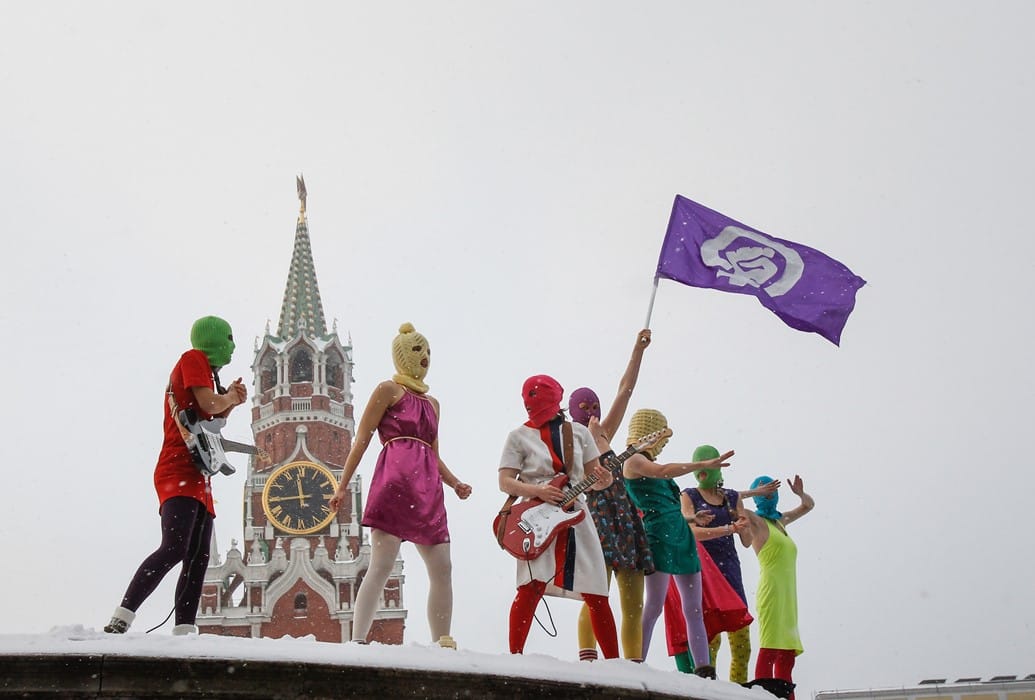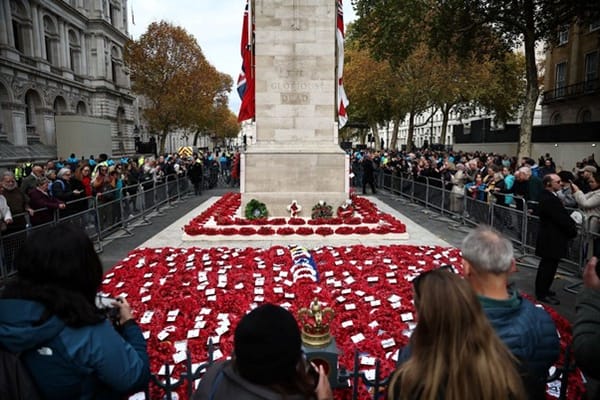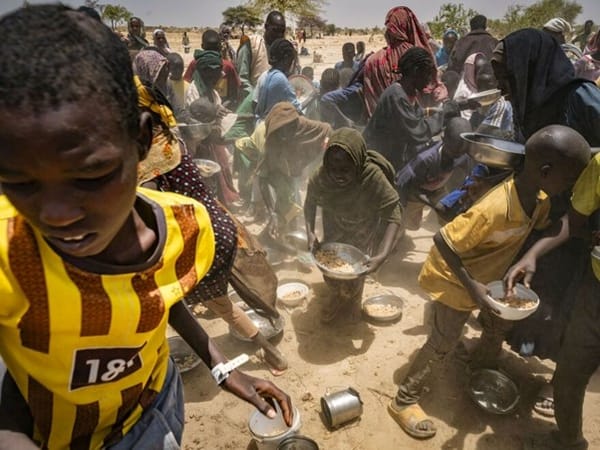‘Soviet Core:’ Exploiting Trauma through Aestheticisation
By diffusing this romanticised vision of Russia and its Soviet past, we strengthen Russia’s international image and with it, its cultural impact.

Maia Bergenheim, BA Global Development, 03/02/2025
We have all seen shapkas, fur coats, and babushkas with floral head scarves taking over social media platforms and in general, taking over pop culture. Drinking vodka at 9am and discussing Dostoyevsky while smoking three packs of cigarettes may be appealing, but romanticising the concept of ‘Soviet/Eastern European core’ dismisses the harm Russia has caused and still causes to ex-Soviet countries.
TikTok has seen many Russian songs trending in the past few months, and with it, romanticised videos and pictures of communist blocks in ex-Soviet countries. Videos of snowy communist blocks have taken over our ‘For You’ pages, showing small kitchens with women smoking out windows in a dark and melancholic manner, alongside old Russian grandmothers drinking vodka in their tiny communist apartments.
One positive is that it has shed light on the neglected living conditions of ex-Soviet countries. It has also given rise to ‘Soviet core’ pop-stars such as punk group Pussy Riot. Pussy Riot is famous for its activism against the Russian government, holding Putin accountable for his monstrosities. More recently, Nadya Tolokonnikva of Pussy Riot reveals in her interview with GlamCult that her art exhibition entitled ‘RAGE’ has been a beacon of hope for many Russians. Shifting our focus on artists such as Nadya, who call out Russia for the atrocities it has performed and is still carrying out, is one of the beauties of rendering political and cultural horrors a ‘trend.’
Unfortunately, most people scrolling aimlessly on TikTok do not bother to process the reality behind this mysterious, beautiful image of Eastern Europe. Not that I blame them; social media has created the need for a quick dopamine rush, not necessitating any further thought. In cases like this, however, it can harm populations still seeking out reparations. The romanticisation of Russia and its Soviet past creates a completely distorted image of Russia. It is seen through these platforms as a misunderstood and philosophical country. A number of artists and content creators considered as ‘alternative’ and ‘artsy’ created their brand using that same romanticised image of ’Soviet core.’ Music duo Snow Strippers have curated an image of misunderstood poetic artists, using a very strong ‘Soviet aesthetic,’ when they actually are the simplest White American duo of musicians. This aesthetic is also commodified by brands who extract value without even addressing the socio-economic challenges that give rise to these perceptions. The harsh reality is that Russians are silenced, brainwashed and mentally tortured by their government.
Ex-Soviet countries additionally still face consequences from Russia’s colonial legacy. During Soviet times, Stalin sold vodka for half the price of milk, making alcoholism now one of the biggest issues in the region. With the war in Ukraine, threats of rebuilding the Soviet Union have emerged. In Estonia, TikTok interviewers even question young people on the streets if they are scared of a Russian attack, asking about their reactions to such an event. The mass killings executed by Stalin have left much trauma on ex-Soviet countries, still intensely felt today. I know that if my Estonian grandmother saw me with my shapka she would disown me. Romanticising symbols of trauma and hardship for Eastern Europeans is disrespectful and even exploitative.
This brings us to the post-Cold War era. Already, Western media had begun to romanticise this perceived ‘otherness’ in the region, when we all know they would not last an hour in these conditions. To this day, they create images of communist blocks that illustrate these living conditions as wistful and moving. I don’t think I would define screaming Russians heard throughout the whole block, barely working water and electricity, as well as mould on every wall, as wistful and moving. By diffusing this romanticised vision of Russia and its Soviet past, we strengthen Russia’s international image and with it, its cultural impact. People in ex-Soviet countries are already threatened daily by Putin’s wish to rebuild ‘the good old’ Soviet Union. The last thing they need is the West creating an aesthetic image of the ‘Motherland,’ completely dismissing the harm it causes.



